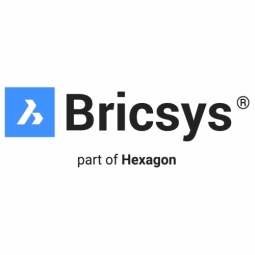Technology Category
- Application Infrastructure & Middleware - Database Management & Storage
- Infrastructure as a Service (IaaS) - Cloud Databases
Applicable Industries
- Buildings
- Healthcare & Hospitals
Applicable Functions
- Facility Management
- Maintenance
Use Cases
- Building Automation & Control
- Inventory Management
About The Customer
The Hospitals of Strasbourg (HUS) is one of the oldest healthcare facilities in France, founded in 1105. It is now a group of five hospitals with over 630,000 square meters of facilities. HUS is the number one job provider in the Alsace region of France, with over 12,000 employees, including 3000 medical doctors. Its missions include care, research, and teaching. Many of their facilities are decades, if not centuries old, and approximately 70% of the area required asbestos data management to prevent sanitary, legal, and financial risks.
The Challenge
The Hospitals of Strasbourg (HUS), one of the oldest healthcare facilities in France, faced a significant challenge in managing their asbestos data. With over 630,000 square meters of facilities, many of which were decades or even centuries old, approximately 70% of the area required asbestos data management to prevent sanitary, legal, and financial risks. The management of asbestos data was a major document management challenge, as each building section containing asbestos needed to have the correct documents associated with it. Any action taken to diagnose, control, audit, neutralize, or remove the asbestos had to be fully documented. The traditional, decentralized way of managing documents was proving unmanageable for HUS. Without a central location to house the asbestos data and an easy way to relate this data to specific locations, it was difficult to access or share documents. This led to difficulties in providing all relevant documents to third-party contractors before they started work in HUS facilities, resulting in activities being conducted but never documented accurately, or duplicated due to lost or incomplete documentation.
The Solution
The solution to HUS's asbestos data management challenge began with replacing its traditional methods of storing documents with a centralized database to host all of their data related to asbestos. The other part of the solution was a custom application called Tessellat, developed by Liris, a local BricsCAD partner. Liris created a dashboard and a graphical user interface, powered by BricsCAD, that connected to the centralized database HUS had developed. Tessellat uses the .dwg format, an open file format used for technical drawings and blueprints by most CAD software, making it simple and economical to deploy and use. The BricsCAD-based graphical user interface gives users the ability to examine and tag 3D representations of HUS facilities, and the dashboard interface allows them to access building-related statistics and export the results in CSV format. Tessellat, in combination with HUS's centralized database of asbestos data, makes document management problems a thing of the past.
Operational Impact
Quantitative Benefit

Case Study missing?
Start adding your own!
Register with your work email and create a new case study profile for your business.
Related Case Studies.

Case Study
Energy Saving & Power Monitoring System
Recently a university in Taiwan was experiencing dramatic power usage increases due to its growing number of campus buildings and students. Aiming to analyze their power consumption and increase their power efficiency across 52 buildings, the university wanted to build a power management system utilizing web-based hardware and software. With these goals in mind, they contacted Advantech to help them develop their system and provide them with the means to save energy in the years to come.

Case Study
Hospital Inventory Management
The hospital supply chain team is responsible for ensuring that the right medical supplies are readily available to clinicians when and where needed, and to do so in the most efficient manner possible. However, many of the systems and processes in use at the cancer center for supply chain management were not best suited to support these goals. Barcoding technology, a commonly used method for inventory management of medical supplies, is labor intensive, time consuming, does not provide real-time visibility into inventory levels and can be prone to error. Consequently, the lack of accurate and real-time visibility into inventory levels across multiple supply rooms in multiple hospital facilities creates additional inefficiency in the system causing over-ordering, hoarding, and wasted supplies. Other sources of waste and cost were also identified as candidates for improvement. Existing systems and processes did not provide adequate security for high-cost inventory within the hospital, which was another driver of cost. A lack of visibility into expiration dates for supplies resulted in supplies being wasted due to past expiry dates. Storage of supplies was also a key consideration given the location of the cancer center’s facilities in a dense urban setting, where space is always at a premium. In order to address the challenges outlined above, the hospital sought a solution that would provide real-time inventory information with high levels of accuracy, reduce the level of manual effort required and enable data driven decision making to ensure that the right supplies were readily available to clinicians in the right location at the right time.

Case Study
Intelligent Building Automation System and Energy Saving Solution
One of the most difficult problems facing the world is conserving energy in buildings. However, it is not easy to have a cost-effective solution to reduce energy usage in a building. One solution for saving energy is to implement an intelligent building automation system (BAS) which can be controlled according to its schedule. In Indonesia a large university with a five floor building and 22 classrooms wanted to save the amount of energy being used.

Case Study
Powering Smart Home Automation solutions with IoT for Energy conservation
Many industry leaders that offer Smart Energy Management products & solutions face challenges including:How to build a scalable platform that can automatically scale-up to on-board ‘n’ number of Smart home devicesData security, solution availability, and reliability are the other critical factors to deal withHow to create a robust common IoT platform that handles any kind of smart devicesHow to enable data management capabilities that would help in intelligent decision-making

Case Study
Gas Pipeline Monitoring System for Hospitals
This system integrator focuses on providing centralized gas pipeline monitoring systems for hospitals. The service they provide makes it possible for hospitals to reduce both maintenance and labor costs. Since hospitals may not have an existing network suitable for this type of system, GPRS communication provides an easy and ready-to-use solution for remote, distributed monitoring systems System Requirements - GPRS communication - Seamless connection with SCADA software - Simple, front-end control capability - Expandable I/O channels - Combine AI, DI, and DO channels




